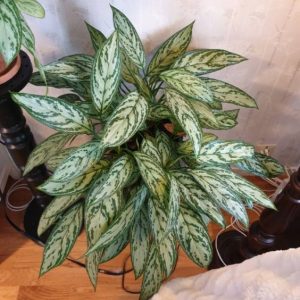- English
- Chinese
- French
- German
- Portuguese
- Spanish
- Russian
- Japanese
- Korean
- Arabic
- Irish
- Greek
- Turkish
- Italian
- Danish
- Romanian
- Indonesian
- Czech
- Afrikaans
- Swedish
- Polish
- Basque
- Catalan
- Esperanto
- Hindi
- Lao
- Albanian
- Amharic
- Armenian
- Azerbaijani
- Belarusian
- Bengali
- Bosnian
- Bulgarian
- Cebuano
- Chichewa
- Corsican
- Croatian
- Dutch
- Estonian
- Filipino
- Finnish
- Frisian
- Galician
- Georgian
- Gujarati
- Haitian
- Hausa
- Hawaiian
- Hebrew
- Hmong
- Hungarian
- Icelandic
- Igbo
- Javanese
- Kannada
- Kazakh
- Khmer
- Kurdish
- Kyrgyz
- Latin
- Latvian
- Lithuanian
- Luxembou..
- Macedonian
- Malagasy
- Malay
- Malayalam
- Maltese
- Maori
- Marathi
- Mongolian
- Burmese
- Nepali
- Norwegian
- Pashto
- Persian
- Punjabi
- Serbian
- Sesotho
- Sinhala
- Slovak
- Slovenian
- Somali
- Samoan
- Scots Gaelic
- Shona
- Sindhi
- Sundanese
- Swahili
- Tajik
- Tamil
- Telugu
- Thai
- Ukrainian
- Urdu
- Uzbek
- Vietnamese
- Welsh
- Xhosa
- Yiddish
- Yoruba
- Zulu
- Kinyarwanda
- Tatar
- Oriya
- Turkmen
- Uyghur

Silver Queen: The Resilient Beauty of the Shade
Plant Description and Habitat
The Silver Queen, Aglaonema commutatum ‘Silver Queen’, is a perennial evergreen herb from the Araceae family. It features a height of 30-40 cm, with distinct nodes on its upright, unbranched stem. The leaves are alternate, long-petioled, and sheath-like at the base, narrow, elongated, light green with gray-green striping, and cover a large area. The plant’s yellow, small, bean sprout-like roots support the leaves, which are round and wrapped in their unopened state. New leaves are light green with gray centers and light green spots on the back, resembling large tree leaves. The flowers are yellowish-white and bloom from February to April.

Silver Queen
Care and Cultivation
The Silver Queen thrives in warm, humid climates with semi-shaded conditions, avoiding cold and direct sunlight, and is not drought-tolerant. It prefers a mix of fertile leaf mold and river sand as soil. The plant’s ideal growth temperature is 20-27°C, with specific temperature ranges for different seasons. It is suitable for rooms with poor ventilation and dark environments, favoring a constant temperature, and can be long-lived with warm water irrigation. Summer requires heat protection and ventilation, while winter necessitates greenhouse cultivation with an overwintering temperature of at least 10°C. The plant demands plenty of moisture during its growing period, with specific watering and fertilization schedules that vary with the season, leading to robust growth and large leaves with proper care.
Silver Queen: Thriving in the Shade with a Splash of Humidity
Growth Requirements and Propagation
Silver Queen plants are typically propagated through division and stem cuttings. During their active growth period, they require ample moisture, with misting on the leaves twice daily during the height of summer, and placement in a semi-shaded area. In winter, as the growth of stems and leaves slows down, water should be limited, and the potting mix should be allowed to dry out slightly. From May to October, when the stems and leaves are growing vigorously, fertilize the plant once every two weeks. The lower leaves of mature plants tend to wither, causing the stem to become bare; in such cases, the top part of the stem can be cut for propagation, and the base will sprout new buds.
If low temperatures are encountered in winter, combined with overly wet soil, the leaves may turn yellow and fall off. The plant is also susceptible to leaf spot diseases, anthracnose, stem rot, and root rot, as well as damage from root-knot nematodes. For stem cuttings, which are best done in late spring to early summer, cut the stem with a sharp knife into small sections with one or two nodes and insert them into sterilized sand, vermiculite, or perlite.
The cuttings can be placed horizontally in the medium, but ensure the bud is facing upwards; vertical insertion is also possible, but avoid inverting the cutting. After planting, provide some shade and mist at midday on sunny days. Spray a fungicide solution every 7 to 10 days (using a 0.1% dilution of products like Benomyl, Thiophanate-methyl, or Captan is suitable), and roots should form within 20 to 25 days. Once the roots reach about 2cm in length, the cuttings can be transplanted. Division propagation can also be done by separating the offsets that sprout from the base during spring. The plant is easy to care for and can thrive in both hydroponic and soil-based cultivation methods.
Cultivation and Soil Requirements
Most Silver Queen plants are grown in pots, and to achieve the best results, it’s important to choose the right soil. The best potting mix consists of loose peat or sphagnum moss, or a blend of leaf mold and sandy loam, with a small amount of ferrous sulfate to acidify the soil.
For potted plants, a loose peat or sphagnum moss mix is optimal. Alternatively, a mixture of leaf mold and sandy loam can be used, acidified with a dilute solution of ferrous sulfate. The plant prefers indirect light, especially avoiding direct sunlight during the summer.
Outdoors, a shade net with 65% to 75% shade coverage is necessary, while indoors, place the plant in a well-lit area to maintain vibrant leaf color. If kept in a dark place for too long, the leaf color will fade, and the leaves will become limp, affecting the ornamental value. The plant is not cold-hardy; insulation measures should be taken when temperatures drop to 10°C. If frozen, the entire plant may decay, and temperatures should not fall below 15°C in winter.
During the winter and spring rainy seasons, water sparingly, waiting until the soil is completely dry and temperatures are above 15°C before watering with lukewarm water. In summer, when growth is robust, more water can be provided. In late spring and early summer, apply a small amount of acidic nitrogen fertilizer, increase nitrogen application in summer, use compound fertilizers in early and mid-autumn, and cease fertilization in late autumn and early winter. With adequate fertilization, the plant will have strong stems, numerous offshoots, and large leaves.



